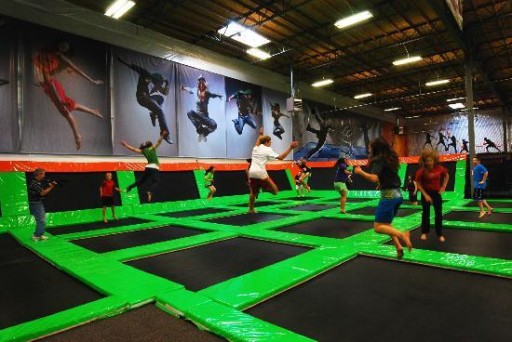
Australia – Trampoline parks may be a lot of fun for kids, but a new study of injuries from one hospital in Australia adds to growing evidence suggesting these facilities can also be dangerous for children.
The hospital is located just about three and a half miles from an indoor trampoline park that opened in July 2014.
In the first six months after the park opened, the hospital treated 40 children under age 17 for trampoline injuries sustained at this facility. Most children had soft tissue injuries, though about one-third had fractures, researchers report in the journal Injury Prevention.
Failed landings were usually the culprit, said lead study author Christopher Mulligan of Sydney Children’s Hospital and the University of New South Wales’ Neuroscience Research.
“When children were injured bouncing alone on a trampoline, this was most often due to failed landings after summersaults or tricks, though there were also a few cases of kids landing outside the trampoline areas, such as on the surrounding padding mats,” Mulligan said by email.
“When more than one person jumps on a small trampoline at the same time, they increase the risk of direct collision,” Mulligan added. “With the increased weight and energy of another person, the smaller sized jumper can also be projected higher and further than expected, which increases the risk of a failed landing.”
The study is small, and it’s possible only the more seriously injured children from the trampoline park landed in the hospital, the authors note. This might exaggerate the proportion of fractures and serious accidents.
But the findings come on the heels of a U.S. study this month documenting a surge in injuries that has mirrored the growing popularity of trampoline parks.
From 2010 to 2014, the average annual number of U.S. emergency room visits for trampoline injuries was close to 92,000, according to the study in Pediatrics.
The vast majority of these U.S. injuries happened at home – but injuries at trampoline parks surged more than 10-fold during the study period. In 2014, injuries at trampoline parks accounted for almost 7,000 emergency room visits, the study found.
Nationwide, the number of U.S. trampoline parks grew from about 40 in 2011 to 280 in 2014. An estimated five to six new parks open each month, and there were probably about 450 total by the end of last year.
In Australia, Mulligan and colleagues note, more than 20 commercial trampoline parks have opened in the past three years, with an estimated three new centers opening every month.
“The important risks to consider are the risks of serious injury, like spinal cord injuries or fractures requiring surgery,” Dr. Kathryn Kasmire of Connecticut Children’s Medical Center in Hartford, lead author of the U.S. study, said after reviewing the findings from Australia.
“The risks cannot be completely avoided even if safe jumping practices are followed,” Kasmire added by email.
For this reason, the American Academy of Pediatrics (AAP) recommends against recreational trampoline use. When trampolines are used for fun, kids should have constant adult supervision and adequate protective padding, and there should be just one jumper at a time, the AAP recommends. Kids should also avoid flips and somersaults, the doctors group advises.
“The physical and mental health benefits of sports are important for a child’s development, and there are many aerobic activities that are safe and appropriate for children,” said Dr. Gary Smith, lead author of the AAP recommendations on trampolines and president of the Child Injury Prevention Alliance in Columbus, Ohio.
“Trampoline use can be one of them if done under appropriate supervision and in an appropriate environment – which is not in a trampoline park or in the back yard,” Smith, who wasn’t involved in either study, added by email.
“If a child would like to use a trampoline, the child should do so under the supervision of a trained instructor, who can safely progress the child through maneuvers as the child gains skills,” Smith said.
As reported by Vos Iz Neias
